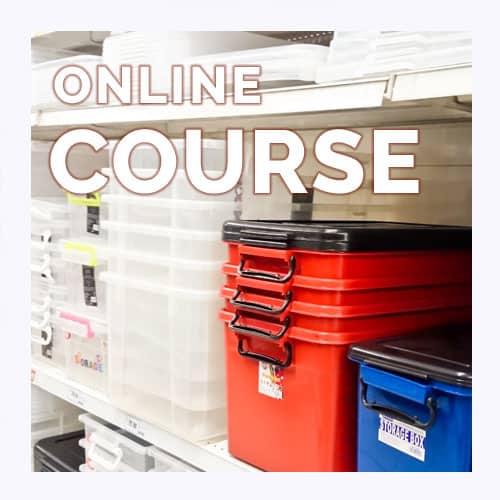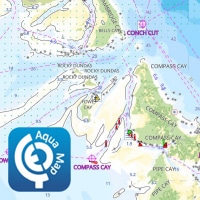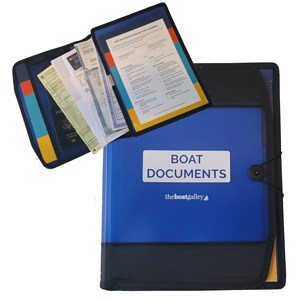Lots of boaters prefer an airpot to a Thermos bottle when it comes to keeping coffee or water hot. While a Thermos bottle may be more versatile — you can use it for soups, stews and Thermos cooking in addition to hot and cold drinks — an airpot extremely convenient, particularly when underway.
I’ve been asked a number of times if a bottle will keep coffee hotter than an airpot or vice-versa, and the answer is that there really isn’t a difference between similar quality bottles and airpots. More on this below, but basically a good airpot will do just as good a job as a good Thermos bottle, but a lesser quality of either one won’t be satisfactory (see an example of a good Airpot on Amazon).
If you’re not familiar with the term “airpot” they’re those pump-style dispensers you find in many coffee shops. While we see them most often for coffee, they’re also good for hot water, hot chocolate and hot cider . . . as well as most cold drinks (you can put ice or even reuseable plastic or stainless ice cubes in it).
To serve a beverage, you simply hold a cup or glass under the spigot and press on the pump — either a button or a lever. You can make a large pot of coffee in your favorite coffee maker, then pour it into the airpot, or simply boil water and put it into the airpot and let different people make their own instant drinks.
Ditto for cold drinks — you can prepare iced tea, lemonade or another drink right in the airpot, or put cold/iced water in the airpot and let everyone make instant drinks.
Great when on passage and everyone is on a different schedule or when one person is a coffee drinker and one likes tea, and maybe the kids want hot chocolate. Lay in a stock of Starbucks VIA instant coffee, tea bags and instant hot chocolate and you’re set!
The big advantage of an airpot over a Thermos bottle is the greatly-reduced chance of hot water spilling and burning someone — or, in hot weather, having cold drinks easily available without opening the refrigerator. Underway, wedge it in the sink so that if anything does spill, it will go right down the drain.
Okay, I said that using an airpot reduces the chances of boiling water spilling. But yes, you still have to pour the boiling water into the airpot. Using a teakettle or coffee pot with a spout will make it safer, as will putting the airpot into the sink and wedging it there so you don’t have to hold it. If you are short and there is a taller crew member on board, get them to do the pouring when conditions are rough so that you’re not lifting the hot pan overhead (I’m short and have had to ask Dave for help at times like these!).
As with Thermos bottles, the insulating ability of different airpots varies greatly. (Read What Makes a Good Thermos for details on the differences.) The best ones are those with a vacuum liner; next best are those with foam insulation and worst are those with just “double-wall” construction. While cheap models are rarely good, buying an expensive airpot is not an guarantee of quality. While you can find many Thermos bottles with a stainless vacuum liner, most airpots have a glass liner. While there is some breakage risk, keeping it wedged in place in the sink will almost totally eliminate the chances of it being thrown across the boat and breaking while in use.
With any glass lined airpot (or Thermos), it’s important to pre-warm the unit with warm water before pouring hot liquids into it. This both reduces the chances of cracking the glass due to the sudden change in temperature and will heat up the interior.
Most airpots have either a stainless or plastic exterior. The plastic ones have a greater chance of cracking or breaking, particularly when stored. They also tend to have more problems with breaking the seal on the vacuum — the airpot then loses most of its insulating ability.
The other choice is whether you prefer a push button pump or a lever. After reading numerous (hundreds?) of reviews, it seems fair to say that levers are both less likely to have problems and take less effort to pump. Some button pumps also tended to pinch fingers if the user wasn’t careful. On most lever pumps, the pump can be locked down for storage. Of course, levers tend to cost a little more on what is otherwise an identical airpot.
Oh, and the difference in color on some pumps? Orange vs. black? That’s because most airpots are used in restaurants or offices where they serve both regular and decaf coffee. Black is “regular” and orange is decaf. Why orange? Back when decaf coffee first became popular, the major brand was Sanka . . . and it came in an orange package. Obviously if you only have one airpot, it doesn’t matter.
Your final choice is size. Most hold around 2 quarts/liters or roughly 64 ounces. A mug typically holds about 10 ounces of liquid, so most airpots will hold roughly 6 mugs of coffee or other drinks. There are some 3 quart and gallon airpots available, too. One thing to note — if you don’t fill an airpot, the contents won’t stay hot as long. Therefore, estimating the size you’ll need is important.
Chip Lawson, a reader, recently sent me data from a kitchen counter keep-hot test he’d done on three airpots plus his Thermos Nissan bottle (that bottle was my top performer in similar tests of three bottles).
He tested a “cheap plastic” airpot, a “cheap stainless” airpot and a new Update International 1.9 Liter Airpot that he had just bought on Amazon (Note: The 1.9 liter size is no longer available. Update International now sells a 2.2 Liter Airpot instead.. The Update International has a stainless exterior and glass-lined vacuum insulation and it really outperformed the others. Starting with boiling water in each, Chip checked the water temperature periodically.
After 5 and a half hours, the water in the Update International Airpot was still 178° F.; a few minutes later, the water in the “cheap stainless” airpot was 149° F. while that in the “cheap plastic” airpot was 138° F.
After 24 hours, the difference was even more remarkable, with the water in the UI Airpot being 136° F., that in the cheap stainless pot 104° F. and the cheap plastic being just above room temp at 81° F.
When Chip tested the UI Airpot against his Thermos Nissan bottle (a standard screw top, not a spigot), they were very comparable. My conclusion is that a good airpot will keep drinks hot or cold just as well as a good bottle. Deciding between them should be based on convenience and personal preference, not that one will work better than the other.
In researching this article, I learned that there are many “glass-lined” or “stainless-lined” airpots out there that look virtually identical to those with a vacuum liner. However, I’d be leery of buying one that didn’t state it was a vacuum liner, as only the vacuum liners are going to keep drinks hot or cold as long as most boaters want (if you’re in a particularly hot or cold climate, a top-quality airpot is even more critical). Many restaurants go through coffee quickly enough that they only care that it’ll stay warm for an hour or two and hence don’t want to pay the extra for a vacuum lined airpot.
Based on Chip’s tests and additional research, here are my choices (in addition to the slightly smaller one above):
- Update International 2.5 Liter Lever Top Airpot — on Amazon
- Zojirushi 1-Gallon (3.8 liter) Lever Top Airpot — on Amazon, has a stainless vacuum liner (one review talks about glass lined, but all but one say it’s all-stainless in the questions and in specs on other sites it says stainless lined) — perfect if you want a larger airpot!
NOTE that the Update International Sup-R-Air line have stainless liners but are not vacuum insulated and hence I do NOT recommend them.
Airpot Bottle Brush — if you use your airpot for anything other than water, you’re going to want to scrub it out. Standard bottle brushes aren’t long enough, but some enterprising person came up with an airpot brush that works really well (sadly, this products appears to no longer be available; other bottle brushes are only 16 inches and not the 19 inches some airpots require).

Carolyn Shearlock has lived aboard full-time for 17 years, splitting her time between a Tayana 37 monohull and a Gemini 105 catamaran. She’s cruised over 14,000 miles, from Pacific Mexico and Central America to Florida and the Bahamas, gaining firsthand experience with the joys and challenges of life on the water.
Through The Boat Galley, Carolyn has helped thousands of people explore, prepare for, and enjoy life afloat. She shares her expertise as an instructor at Cruisers University, in leading boating publications, and through her bestselling book, The Boat Galley Cookbook. She is passionate about helping others embark on their liveaboard journey—making life on the water simpler, safer, and more enjoyable.
Here’s your “Quick Start” to everything you need to know when living on a boat:











Chip Lawson says
Carolyn.
Thanks for posting your excellent research on airpots along with my test results And thanks for inspiring me to do the actual temperature testing like you did for your original post. The testing really showed how poorly a cheap airpot works and how worthwhile quality really is when it comes to heat retention. One crazy note about my purchase of the airpot with the orange pump top instead of the black pump top. I chose the orange top not because I wanted to identify decaf as the contents but because I wanted the contrasting color to the black outside ring of the cap to make the pump button easy to see in the dark on deck. I checked it in a dark garage and it definitely helps.
Cheers
Chip
Vala says
Yea I had a lovely glass lined pot that I rinsed out with hot water, and then dumped a bunch of ice cubes straight into it. there was an explosion inside, and no more pot!
Pamela Harwood says
Carolyn,
Your newsletter and website have been invaluable in helping us to stock the galley of our 46′ wooden Bridge Deck Cruiser. While she is on the hard being replanked, we decided to sail our 21′ open cockpit gaff-rigged cutter from Falmouth, ME to Bass Harbor ( on Mt Desert Island) over the course of 2 long weekends. I had planned to bring the airpot, a Stainless Bunn, like you find in convenience stores, but Hugh didn’t think we had room. He was sorry not to have some hot tea during the cooler afternoons! The second weekend I followed your tips of pre-heating the airpot and completely filling it. I even scalded the milk before adding it to the tea. Hot beverage was MUCH appreciated as the winds were cooler the 2nd weekend. The large size allowed us to fill our smaller “Contigo” 16 oz non-spill stainless travel mugs several times through the course of a long day.
Carolyn Shearlock says
Hot drinks on a cool day go a long way in lifting the spirits! Glad you’re finding the tips helpful.
Kathy Belanger-Barber says
They are glass inside like an old thermos, if you sail about that heels and it’s not secure it’s ruined
Libby says
Is it best to keep the level in down position when not pumping coffee out? Does that keep the coffee hotter or does it matter?
Liibby
Carolyn Shearlock says
Check the instructions for a particular model. The ones I’ve used don’t matter, but I’m not 100% sure that’s the case with all.
Raymund says
thanks for thge info,may I know how to determine when to replace an Airpot or how to know if the glass lid is ok.
Carolyn Shearlock says
The simple way to know that you need to replace it is if the contents aren’t staying hot. A good airpot should keep things hot for at least 8 hours — really more like 12 hours.
joanne says
Can the glass insert be replaced if broken, if so how and where to order.
Carolyn Shearlock says
As far as I know, it cannot be replaced.
Leslie says
Thank you for this post. I’m researching airpots for a party, and this was very helpful, answering all of my questions!
Ann Jones says
I received this Zimmeremann starkglas with copper inside and I do not know if it is for hot or cold liquids–it is black on the outside and a red dot on top–
Carolyn Shearlock says
I’m not familiar with that brand, but any airpot can be used for either hot or cold, just like a Thermos bottle.
Ann Jones says
that is a german company name
Kenneth Tobin says
imho I really liked the airpot but I found it a lot more fragile than a thermos, it needed a dedicated counter spot and always seemed to be in the way with no safe place to put it.
Shirley Lee says
The coating on my zujiroshi airport has turn rough and particles came out when i touch it, it is a sandy kind of feeling. I have used it for a few years already.
Could you enlighten me what is the reason and whether it is still usable
Carolyn Shearlock says
Is it plastic or metal? Heat and sunlight take their toll on both, but as long as it’s keeping drinks hot, it’s fine to use. A bit of flaking on the outside won’t harm what’s inside.
Carol L says
Is it safe to use the plastic insert (like a straw) and stays inside the hot water inner everyday ?
Carolyn Shearlock says
Airpots are designed to be used all day, every day — think of restaurants and offices — and the materials used in them must be safe for constant immersion.
Rommel Cael says
What are those shiny flaky particles that goes along with the hot water from most airpots? It is best seen if you use a clear glass and look through it with the sunlight!
Carolyn Shearlock says
I think you’re seeing tiny air bubbles that get pumped into the water to dispense it.
David Tyrone Lyttle says
I have 2 Flow-Thru Airpots which I use for cold water. After a few weeks of use I read the instructions that said never use ice. I have filled it with ice and water since the day I brought it. It works fine. What can go wrong?
Carolyn Shearlock says
I can only think that maybe small bits of ice could get in the tubes and plug them up until they melt? Like you, I don’t really understand why you couldn’t.
David Lyttle says
no bit of ice have pludded the tubes. the directiond say it could leadd to glass breakage… thats scary
Carolyn Shearlock says
Interesting. I guess that’s a reason for having one with a stainless liner instead of a glass one. Thanks for the follow-up!
John Adkins says
In lieu of a bottle brush that always seemed to never be found, I just chuck 2-3 denture cleaning tablets into my thermoses, then fill with warm tap water. DO NOT re-lid, as the process produces CO2 which could cause damage to liners and/or seals.